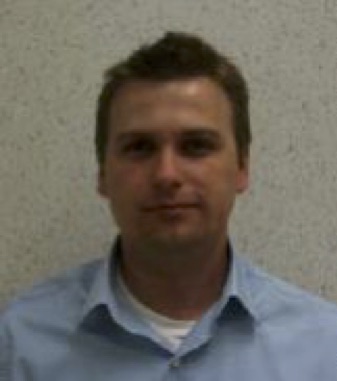Org. Synth. 2017, 94, 292-302
DOI: 10.15227/orgsyn.094.0292
Enantioselective Preparation of 5-Oxo-5,6-dihydro-2H-pyran-2-yl phenylacetate via organocatalytic Dynamic Kinetic Asymmetric Transformation (DyKAT)
Submitted by Tamas Benkovics,
1* Adrian Ortiz, Gregory L. Beutner, and Chris Sfouggatakis
Checked by Simon L. Rössler and Erick M. Carreira
1. Procedure (Note 1)
A. Phenylacetic anhydride (1). To a two-necked, 500 mL round-bottomed flask equipped with a 3.5 cm PTFE-coated magnetic oval stir bar and fitted with thermometer and a rubber septum, 2-phenylacetic acid (50.0 g, 367 mmol, 1.00 equiv) and dichloromethane (100 mL) are added (Note 2). The resulting homogenous solution is cooled with an ice bath to an internal temperature below 5 °C, and EDC·HCl (49.3 g, 257 mmol, 0.70 equiv) is added portion wise over the course of 15 min, maintaining internal temperature at or below 10 °C (Note 3). After completion of the addition, the reaction mixture is allowed to warm to room temperature and stirred for 30 min after removal of the ice bath, at which time full conversion is determined by 1H NMR (Note 4). The reaction mixture is transferred to a 500 mL separatory funnel, rinsing the flask with DCM (3 x 20 mL), which is added to the separatory funnel. The organic phase is washed with 1N aq. HCl (100 mL) and water (100 mL) (Note 5), dried over sodium sulfate (20 g), filtered through a 150 mL coarse porosity sintered glass funnel, and concentrated using a rotary evaporator (40 °C, 450 to 225 mmHg). Allowing the crude oil to cool to room temperature under high vacuum (<1 mmHg) induced solidification (Note 6). After 1 h of drying under high vacuum, the solid chunk is broken into smaller pieces using a spatula and dried for an additional 4 h to yield 2-phenylacetic anhydride (39-42 g, 84-90%) as a white solid (Note 7).
B.
(S)-5-Oxo-5,6-dihydro-2H-pyran-2-yl phenylacetate (
3). To a two-necked, 250 mL round-bottomed flask, equipped with a 3.5 cm PTFE-coated magnetic oval stir bar and fitted with thermometer and a rubber septum, is added
6-hydroxy-2H-pyran-3(6H)-one (5.00 g, 43.8 mmol, 1.00 equiv),
2-phenylacetic anhydride (13.9 g, 54.8 mmol, 1.25 equiv) and
DCM (90 mL) (
Note 8). The resulting homogenous solution is cooled below 5 °C using an ice bath. The rubber septum is replaced with a 10 mL dropping funnel, which is charged with a solution of
(S)-6-phenyl-2,3,5,6-tetrahydroimidazo[2,1-b]thiazole (895 mg, 4.38 mmol, 0.10 equiv) (
Note 2) in
DCM (7 mL). An additional portion of
DCM (3 mL) is used to assist in transferring the catalyst. The solution is added dropwise to the reaction mixture over 15 min maintaining the internal temperature below 10 °C. After completion of the addition, the dropping funnel is washed down with
DCM (1 mL), the ice bath is removed and the reaction mixture stirred for 4 h, at which point full conversion is achieved as determined by TLC (
Note 9). The reaction mixture is transferred into a one-necked, 200 mL flask, washing with
DCM (10 mL). The yellow solution is concentrated under reduced pressure via rotary evaporation (heating bath 30 °C, 375 mmHg) until approximately 2/3 of
DCM is removed. The orange solution is then diluted with
iPrOH (25 mL), and further concentrated under reduced pressure via rotary evaporation (heating bath 30 °C, 225 mmHg to 75 mmHg). The orange-red solution is aged in a fridge at 0 °C for 2 h during which time crystallization occurs. The crystals are broken into slurry with a spatula, the suspension aged in the fridge for an additional 1 h, and vacuum filtered through a glass funnel (75 mL, fine porosity) while cold. The filtered cake is washed with cold
iPrOH/H
2O (1:1, 2 x 10 mL). The powder is transferred into a flask and dried under high vacuum (<1 mmHg) overnight yielding
(S)-5-oxo-5,6-dihydro-2H-pyran-2-yl 2-phenylacetate (7.7 g, 33.2 mmol, 76%) as an off-white powder (Notes
10 and
11). The enantiomeric excess is determined to be 96.0% via chiral chromatography (
Note 12).
Figure 1. Reaction set-up
2. Notes
1. Prior to performing each reaction, a thorough hazard analysis and risk assessment should be carried out with regard to each chemical substance and experimental operation on the scale planned and in the context of the laboratory where the procedures will be carried out. Guidelines for carrying out risk assessments and for analyzing the hazards associated with chemicals can be found in references such as Chapter 4 of "Prudent Practices in the Laboratory" (The National Academies Press, Washington, D.C., 2011; the full text can be accessed free of charge at
https://www.nap.edu/catalog/12654/prudent-practices-in-the-laboratory-handling-and-management-of-chemical). See also "Identifying and Evaluating Hazards in Research Laboratories" (American Chemical Society, 2015) which is available via the associated website "Hazard Assessment in Research Laboratories" at
https://www.acs.org/content/acs/en/about/governance/committees/chemicalsafety/hazard-assessment.html. In the case of this procedure, the risk assessment should include (but not necessarily be limited to) an evaluation of the potential hazards associated with
phenylacetic acid,
dichloromethane,
sodium sulfate,
1-ethyl-3-(3-dimethylaminopropyl)-carbodiimide hydrochloride (
EDC·HCl),
levamisole hydrochloride (
(S)-6-phenyl-2,3,5,6-tetrahydroimidazo[2,1-b]thiazole),
isopropyl alcohol,
6-hydroxy-2H-pyran-3(6H)-one, and
2-phenylacetic anhydride.
2.
Phenylacetic acid (99%) and
dichloromethane (99.5%, ACS reagent) were purchased from Sigma-Aldrich and used as received.
EDC·HCl (99%) was purchased from Fluorochem and used as received.
Levamisole was generated from its commercially available HCl salt (99%, Sigma-Aldrich) using a literature procedure.
23. Upon addition of the coupling agent, a mild exotherm occurs. The addition of the initial portions lead to a stronger temperature increase, therefore it is recommended to add smaller portions initially and gradually increase portion size towards the end in order to maintain a temperature below 10 °C.
4. Control experiments showed that excess
phenylacetic acid present in the anhydride can lower the enantioselectivity achieved using the DyKAT. Given that the isolation procedure is not designed to remove
phenylacetic acid, if the conversion is lower than 95%, an additional 0.1 equivalents
EDC·HCl can be added. The checkers never found it necessary to add more
EDC·HCl.
5. Complete phase separation may take prolonged time but is crucial for high yields.
6. When solidification ensues, the checkers found it advisable to keep the flask agitated to prevent formation of a solid chunk too large to break easily. Upon solidification, the flask heats up significantly.
7.
Phenylacetic anhydride 1 exhibits the following physical properties:
1H NMR
pdf(400 MHz, CDCl
3) δ : 3.73 (d,
J = 0.6 Hz, 4H), 7.20-7.24 (m, 4H), 7.28-7.37 (m, 6H).
13C NMR
pdf(100 MHz, CDCl
3) δ : 42.2, 127.7, 128.9, 129.5, 132.1, 167.0. IR (neat): 3061, 3032, 1805, 1739, 1497, 1455, 1401, 1334, 1224, 1210, 1036, 1025, 998, 954, 903, 750, 731, 700, 678, 605, 551, 531 cm
-1. mp 67-69 °C. Anal. Calcd for C
16H
14O
3: C, 75.58; H, 5.55; O, 18.88. Found: C, 75.65 H, 5.73. This chemical is typically stored at or below 5 °C.
8. The preparation of lactol
2 has been described on multi-gram scale using two procedures.
3,4 For this report, the lactol was generated via reference 3 using mCPBA as the oxidant. Residual vanadium present after the preparation of
2 via reference 4 has shown to negatively affect the DyKAT. The checkers found lactol generated via references 3 to lead to higher yields if purified additionally by flash column chromatography (hexanes/ethyl acetate 7:3 to 6:4).
9. TLC plates are eluted with hexanes/EtOAc 7:3, staining with permanganate stain. R
f(
3) = 0.47, R
f(
2) = 0.13, R
f(
phenylacetic anhydride) = 0.32. The submitters report conversion of the DyKAT can be determined by HPLC on a YMC-Pack Pro C18 3 µM, 4.6 x 50 mm column using 0.05% TFA in
CH3CN:
water (5:95) as solvent A and 0.05% TFA in
CH3CN:
water (95:5) as solvent B. The 10 min gradient started with B = 0% and became 100% at 8 min. The wavelength of detection was 220 nm and the flow rate was 1 mL/min. With this method lactol
2 elutes at 1.38 min, phenylacetate
3 elutes at 5.84 min, and the
phenylacetic anhydride elutes at 7.15 min.
10. Phenyl acetate
3 exhibits the following physical properties:
1H NMR
pdf(500 MHz, CD
2Cl
2) δ : 3.70 (dd,
J = 1.2, 0.6 Hz, 2H), 4.14 (dd,
J = 16.9, 0.7 Hz, 1H), 4.40 (d,
J = 17.0 Hz, 1H), 6.24 (dt,
J = 10.4, 0.7 Hz, 1H), 6.48 (dd, J = 3.6, 0.8 Hz, 1H), 6.92 (dd,
J = 10.4, 3.7 Hz, 1H), 7.27-7.31 (m, 3H), 7.32-7.37 (m, 2H).
13C NMR
pdf(125 MHz, CD
2Cl
2) δ : 41.6, 67.9, 87.4, 127.9, 129.2, 129.3, 129.8, 134.0, 142.6, 170.7, 193.7. IR (neat): 3064, 3032, 2895, 1705, 1747, 1497, 1455, 1466, 1236, 1132, 1103, 1074, 1011, 146, 931, 868, 760, 710, 697 cm
-1. mp 72-74 °C. Anal. Calcd for C
13H
12O
4: C, 67.23; H, 5.21; O, 27.56. Found: C, 67.17; H, 5.27. [α]
D22 +152.3 (
c 3.08, CHCl
3). This chemical is typically stored at or below 5 °C.
11. A second reaction on identical scale provided 7.3 g (72%) of the product with 96.7% ee (
Note 12).
12. The checkers determined enantiomeric excess via SFC: Chiralpak IB, 3%
MeOH, 2.0 mL/min, 25 °C, 200 nm, 96.0% ee (t
R(minor) = 5.8 min, t
R(major) = 6.4 min). Submitters report that enantiomeric excess (ee) can be determined on Chiralpak AD-3R 3 µM 4.6 x 150 mm column using 0.01M NH
4OAc in 80:20 mixture of
water and
MeOH as mobile phase A, and 0.01M NH
4OAc in 5:20:75 mixture of
water,
MeOH and
MeCN as mobile phase B. The 20 min gradient started with 10% B, increased to 80% B gradually until 19 min, then to 100% B until 20 min. Wavelength of detection = 220 nm and flow rate was 1 mL/min. Using this method, the
S-enantiomer elutes at 11.7 min and the
R-enantiomer elutes at 12.8 min. Using HPLC methods described above, >95 area percent of
3 per starting material
2 has consistently been observed at 6 h with an in-process enantioselectivity of 79%. The checkers found an in-process enantioselectivity of 79% upon completion of the reaction after 4 h.
Working with Hazardous Chemicals
The procedures in
Organic Syntheses are intended for use only by persons with proper training in experimental organic chemistry. All hazardous materials should be handled using the standard procedures for work with chemicals described in references such as "Prudent Practices in the Laboratory" (The National Academies Press, Washington, D.C., 2011; the full text can be accessed free of charge at
http://www.nap.edu/catalog.php?record_id=12654). All chemical waste should be disposed of in accordance with local regulations. For general guidelines for the management of chemical waste, see Chapter 8 of Prudent Practices.
In some articles in Organic Syntheses, chemical-specific hazards are highlighted in red "Caution Notes" within a procedure. It is important to recognize that the absence of a caution note does not imply that no significant hazards are associated with the chemicals involved in that procedure. Prior to performing a reaction, a thorough risk assessment should be carried out that includes a review of the potential hazards associated with each chemical and experimental operation on the scale that is planned for the procedure. Guidelines for carrying out a risk assessment and for analyzing the hazards associated with chemicals can be found in Chapter 4 of Prudent Practices.
The procedures described in Organic Syntheses are provided as published and are conducted at one's own risk. Organic Syntheses, Inc., its Editors, and its Board of Directors do not warrant or guarantee the safety of individuals using these procedures and hereby disclaim any liability for any injuries or damages claimed to have resulted from or related in any way to the procedures herein.
3. Discussion
Derivatives of lactol (
2) are highly useful synthetic building blocks, which enable a wide array of diastereoselective functionalizations.
5 Consequently, enantiomerically pure lactol derivatives have been used as starting materials for the synthesis of both natural products
6 and a pharmaceutical drug candidate.
7 Previous procedures for making chiral derivatives of
2 employed either lengthy synthetic manipulations or chromatographic separations, some using chiral stationary phase.
5b, 6, 8 To prepare kilogram quantities of crystalline (
S)-benzoate
4, we previously developed a two-step procedure using an enzyme derived from
Candida Rugosa (eq. 1).
3 While this procedure allowed us to access the target in high enantiopurity without chromatography, the overall yield of these transformations was quite low due to the enzymatic resolution of racemic
intermediate
4 via transesterification. The same enzyme can also be used to access the
R-enantiomer of
4 via an enzymatic Dynamic Kinetic Resolution (DKR, eq 2); and even though this approach is inherently more efficient than a classical resolution, the enzyme loading was reported to be between 100-200 weight%.
7a To address these shortcomings, we sought to develop an improved protocol to access these useful chiral building blocks.
Our team has since reported an organocatalytic Dynamic Kinetic Asymmetric Transformation (DyKAT) to access a variety of pyranone compounds in high enantioselectivities.
9 This novel transformation provides an operationally simple alternative to access both (
S) and (
R) enantiomers of phenylacetate
3 in good yields and high enantioselectivities (Scheme 1). Using commercially available organocatalysts levamisole (10 mol%) or (+)-benzotetramisole (2 mol%), the desired chiral building blocks can be prepared from known lactol
2 at room temperature in a few hours. After simple solvent exchange to isopropanol,
3 can be isolated via crystallization in high chemical and enantiomeric purity, leaving all other byproducts, including the minor enantiomer of
3, the organocatalyst,
phenylacetic acid and anhydride in the mother liquor.
Scheme 1. Synthesis of both (R) and (S)- enantiomers of 3
Appendix
Chemical Abstracts Nomenclature (Registry Number)
Phenylacetic acid (103-82-2)
1-Ethyl-3-(3-dimethylaminopropyl)carbodiimide hydrochloride (25952-53-8)
Levamisole hydrochloride (16595-80-5)
Isopropyl alcohol (67-63-0)

|
Tamas Benkovics, a native of Hungary, obtained his B.S. in chemistry from Colorado State University in 2003. After spending two years with the process group of Amgen in Thousand Oaks, CA, he joined the research group of Professor Tehshik P. Yoon at the University of Wisconsin-Madison. After receiving his Ph. D. in 2010, he joined the process group of Bristol-Myers Squibb, and currently employed in the Department of Process Research and Development at Merck in Rahway, NJ. |

|
Adrian Ortiz received his B.S. in chemistry from the University of Arizona in 2005 where he performed research under the guidance of Professor Dominic V. McGrath. He then joined the group of Professor K.C. Nicolaou at the Scripps Research Institute in San Diego, CA where he studied the total synthesis of natural products. Upon completion of his Ph.D. in 2009, he joined the process group of Bristol-Myers Squibb in 2010. |

|
Gregory L. Beutner was born in Malden, Massachusetts in 1976. He graduated in 1998 with a B.S. in chemistry from Tufts University, where he worked with Profs. Arthur Utz and Marc d'Alarcao. He completed his Ph.D. studies under the supervision of Prof. Scott Denmark at the University of Illinois in May 2004. He then worked as a NIH post-doctoral research associate at the California Institute of Technology with Prof. Robert Grubbs and later at Merck Process Research Laboratories in Rahway, NJ. He is currently employed in the Department of Chemical and Synthetic Development at Bristol-Myers Squibb in New Brunswick, NJ. |

|
Chris Sfouggatakis received his B.S. in chemistry from Fordham University (Bronx, NY) in 1999 where he performed research under the guidance of Professor Moses K. Kaloustian at Fordham, and Professor Louis S. Hegedus at Colorado State University during a summer internship. He then joined the group of Professor Amos B. Smith, III at The University of Pennsylvania where he studied the total synthesis of a unique family of highly cytotoxic natural products. After earning his Ph.D. in 2004, Chris joined the process chemistry group at Bristol-Myers Squibb where he has gained experience as a project team leader for both early and late stage development projects (pre-clinical to PhIII). |

|
Simon L. Rössler was born in Germany and received his Bachelor's degree in chemistry from the ETH Zürich in 2013. After a short research stay with Prof. T. Ritter at Harvard University he completed his Master's degree at ETH Zürich (2015). Since June 2015, he has been a doctoral student in the group of Prof. Erick M. Carreira, working on the development and mechanistic investigation of transition-metal catalyzed asymmetric reactions. |
Copyright © 1921-, Organic Syntheses, Inc. All Rights Reserved